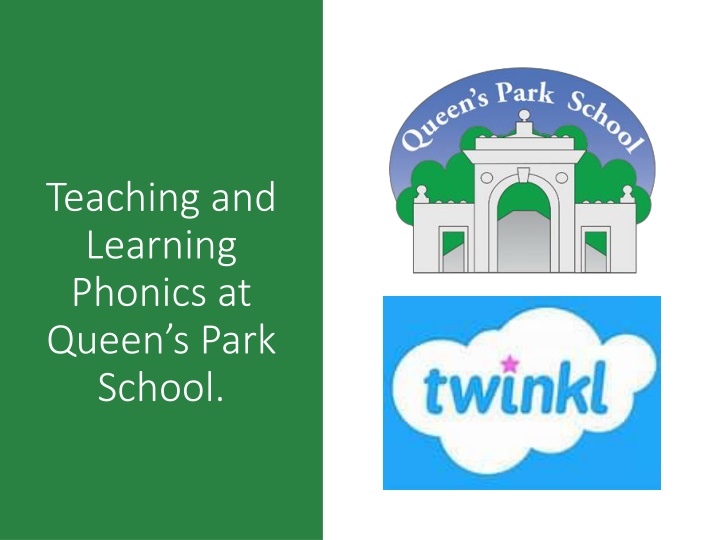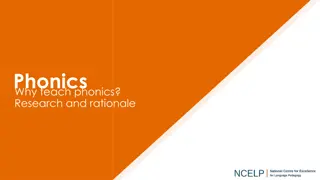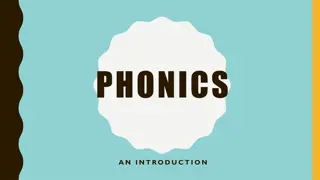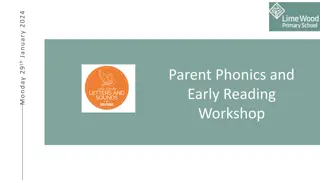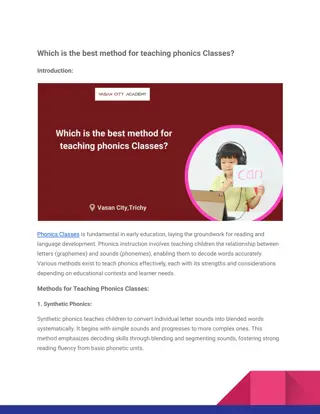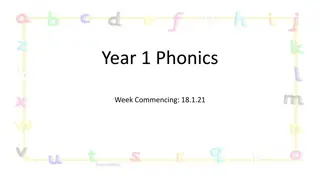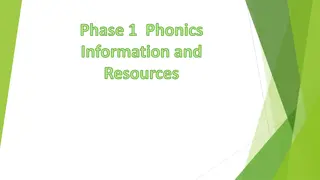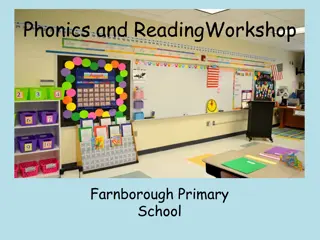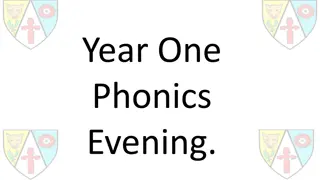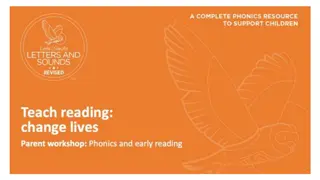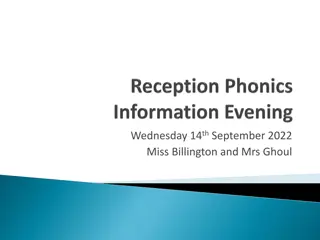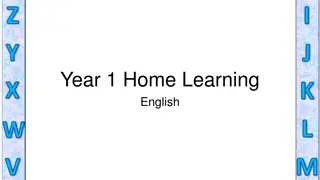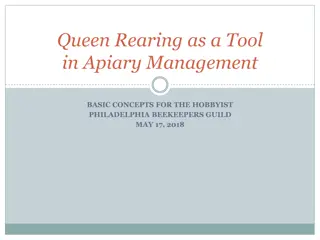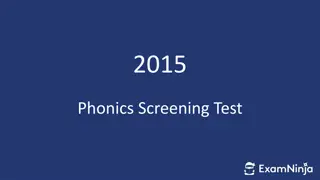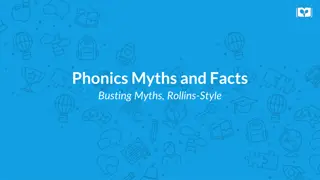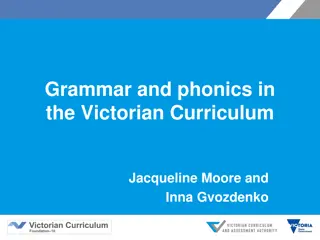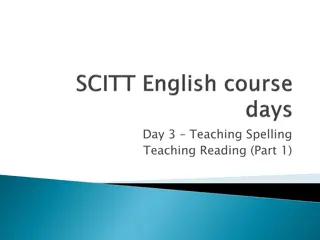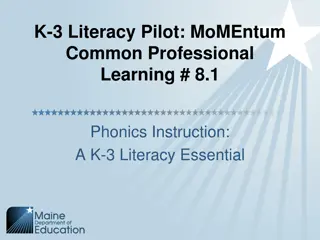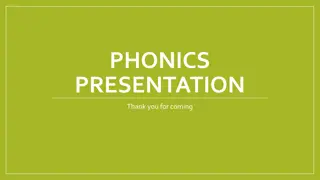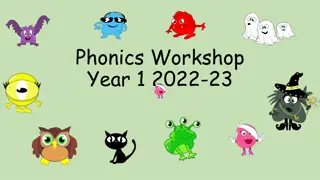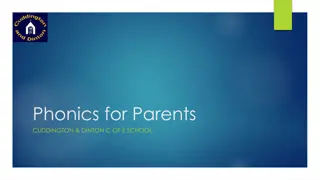Teaching and Learning Phonics at Queen's Park School
Understand the importance of phonics in reading and writing education at Queen's Park School. Learn about phonics basics, terminology, and the Twinkl Systematic Synthetic Phonics Programme used. Discover how to support your child's learning and get insights into the complexity of English phonetics.
Download Presentation

Please find below an Image/Link to download the presentation.
The content on the website is provided AS IS for your information and personal use only. It may not be sold, licensed, or shared on other websites without obtaining consent from the author.If you encounter any issues during the download, it is possible that the publisher has removed the file from their server.
You are allowed to download the files provided on this website for personal or commercial use, subject to the condition that they are used lawfully. All files are the property of their respective owners.
The content on the website is provided AS IS for your information and personal use only. It may not be sold, licensed, or shared on other websites without obtaining consent from the author.
E N D
Presentation Transcript
Teaching and Learning Phonics at Queen s Park School.
Aims of the session To share information about what phonics is and how it is taught at Queen s Park. To teach the basics of phonics and some useful phonics terms To give tips and suggestions about how you can support your child. To provide an opportunity for questions.
Did You Know? There are 26 letters in the alphabet but there are 44 sounds and over 100 different ways of spelling them. This is why English is one of the most complex languages to learn!
What Is Phonics? Phonics is a method for teaching reading and writing. It develops phonemic awareness the ability to hear, recognise and use the sounds within words. It teaches the correspondence between phonemes (sounds) and the graphemes (letters) that represent them. Phonics is currently the main way in which children in British primary schools are taught to read in their earliest years. Children will also be taught other skills, such as whole-word recognition (see tricky words ), book skills and a love and enjoyment of reading.
At Queens Park we use The Twinkl Systematic Synthetic Phonics Programme to teach phonics. This is split into 6 levels. In Reception we aim to cover Levels 1 4. In Y1 we aim to cover Level 5 In Y2 we aim to cover level 6 Every child in Reception, Y1 and Y2 learns daily phonics at their level. This is approximately 30 mins a day.
Phonics Terminology Phoneme Grapheme - Blending Segmenting down into separate letter sounds. Decode - Phoneme frame - Sound buttons together to read the word . - This is how a phoneme is written down e.g. ai ay a a-e - Children need to be able to hear the separate sounds in a word and then blend them together to say the whole word. - Children need to be able to hear a whole word and say every sound that they hear. Segmenting is breaking a word Phonemes are sounds that can be heard in words e.g. c-a-t. The ability to segment and blend words. We say each phoneme and blend them
Phonics Terminology Digraph - two letters that make one sound. e.g. ai, ck, sh, ss Split Digraph - A phoneme with two letters which are separated by another letter. E.g. make like stone This means that the phoneme comprises of Trigraph - Tricky Words (Common Exception Words) three letters e.g. air, ear, ure, igh This means that the phoneme comprises of Words which can t be blended; children learn to read at sight. I go no to the into .
Twinkl Phonics What are the six levels?
Level 1: Nursery - Getting ready for phonics Increasing children s Sound Awareness Hearing and discriminating between environmental sounds. Hearing and discriminating between instrumental sounds Hearing the sounds that our bodies make (e.g. clapping, stamping) Rhythm and rhyme Alliteration Voice sounds Oral blending and segmenting (e.g. hearing that d-o-g makes dog )
Level 2: Reception Children will learn their first 19 phonemes/ graphemes (pure sounds): Set 1: s a t p Set 2: i n m d Set 3: g o c k Set 5: h b l f ff ll ss Set 4: ck e u r They will use these phonemes to read and spell simple consonant- vowel-consonant (CVC) words: sat, tap, dig, duck, rug, puff, hill, hiss All these words contain 3 phonemes.
Level 3: Reception Children will enter Level 3 once they know the first 19 phonemes and can blend and segment to read and spell CVC words. They will learn another 26 phonemes: j, v, w, x, y, z, zz, qu Consonant digraphs: ch, sh, th, ng. ai, ee, igh, oa, oo, ar, or, ur, ow, oi, ear, air, ure, er They will use these phonemes (and the ones from level 2) to read and spell words: chip, shop, thin, ring, pain, feet, night, boat, boot, look, farm, fork, burn, town, coin, dear, fair, sure They will learn new common exception (tricky) words
Level 4: Reception Children will enter phase 4 once they know all of the level 2 and 3 phonemes and can blend and segment to read and spell CVC words. They will not learn any new phonemes in this level. They will learn to blend adjacent consonants at the beginning and end of words. st, bl, fl, nk, spl, spr They will learn new common exception (tricky) words
Level 5: Year 1 learn alternative graphemes for known phonemes e.g. ou (shout) saying ow (cow) learn alternative pronunciations of known graphemes e.g. ch (church) saying ch (chef) introduce split digraphs make bike these introduce suffixes and prefixes: unkind warmer coldest jumped chairs foxes learn to read and spell more common exception words.
Level 6: Year 2 develop children s knowledge of spelling patterns and best-guess grapheme selection learn more alternative graphemes for known phonemes learn more alternative pronunciations for known graphemes develop an understanding of the spelling rules for adding suffixes and prefixes introduce homophones/near homophones and contractions learn to spell more common exception words; develop their understanding of grammar rules learn effective writing techniques including editing and proofreading
A Twinkl Lesson in Reception Children are introduced to a new sound through a story (s). Children learn an action to help them remember the sound. Children listen to words containing the sound (snake, horse). Children learn a handwriting phrase to help them write the letter . Children begin to orally blend simple words (sun, sat). Children will encounter the sound in the indoor and outdoor environment.
How can I support my child? Continue to read daily; poetry, songs, fiction and non-fiction; talk about what you read to help develop comprehension. Learn the Twinkl actions to help your child remember the sounds they learn. Notice words which contain the sound children are learning. Use the handwriting phrases and practice forming letters in a fun way (in the air with a pointy finger, in sand, in the bath, etc.). Complete the weekly homework linked to the sounds we have learned.
How can I support my child? Have a go at oral blending. Say the sounds in simple words like s-u-n and see if your children can say the whole word. *Remember they must be pure sounds! Once your child starts bringing home a reading book, have a go at reading every day. You could read the book to your child first to give them the confidence to have a go on their own. It s not a test! Playing games such as I Spy .something beginning with ssss
How can I support my child? Useful Twinkl links to help support your child in phonics and reading: 1. Actions for Level 2 sounds: https://www.youtube.com/watch?v=0SzkjubQ-Ok 2. Information about pure sounds: https://www.youtube.com/watch?v=T7iMt_9176w 3. Twinkl Tricky Word Songs: https://www.youtube.com/watch?v=andH6QuDoNI 4. Information about Twinkl Phonics and Rhino Reader Books: https://www.youtube.com/watch?v=mf6Hy-dSLt8 5. An introduction to Twinkl Go: https://www.youtube.com/watch?v=6qv7KLpv_pE
Rhino Readers and Twinkl Go Rhino Readers are Twinkl s levelled books which match the sounds your child is learning. The main characters are familiar Kit, Sam, Mum and Dad. Twinkl Go is a simple, online platform where you can access books that have been set by the teacher. A guide is included but here is an example with the code that you can use straight away: Resource Code KT6098 Code Expiry 4th November 2023 Level 2a books and resources https://www.twinkl.co.uk/go
